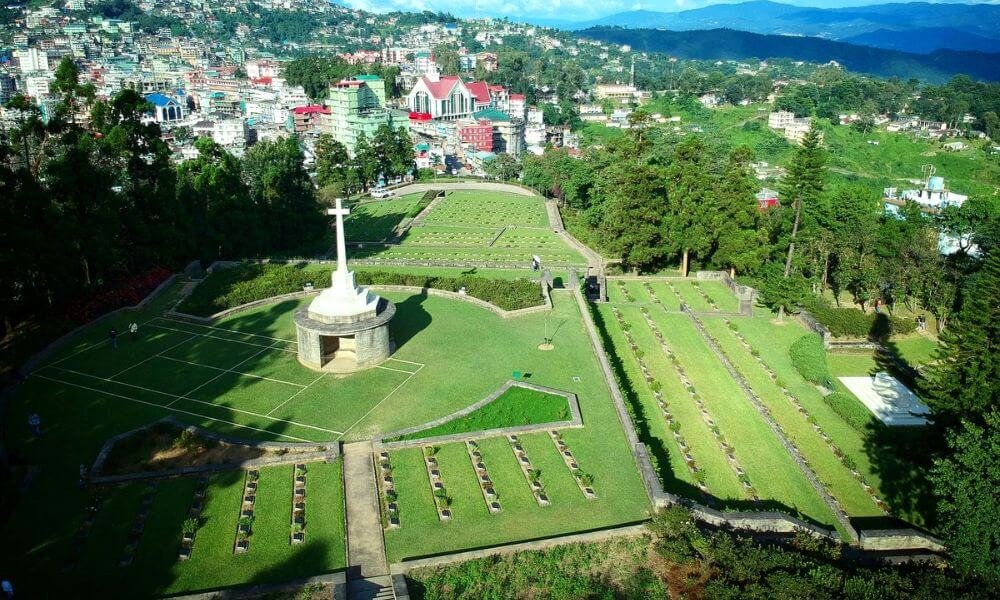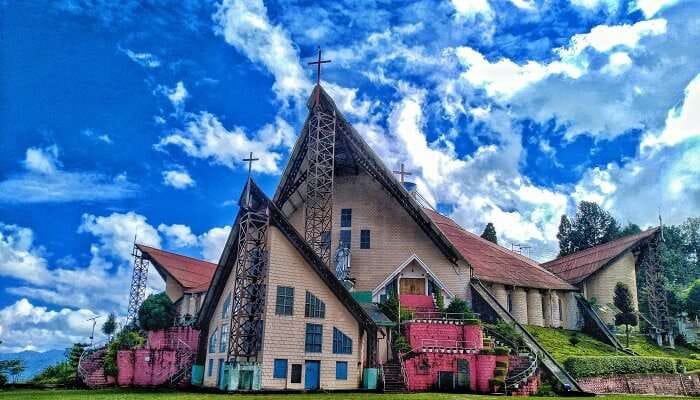Within the emerald embrace of the Naga Hills, Kohima stands as the proud capital of Nagaland, a land steeped in rich tribal heritage and breathtaking natural beauty. More than just an administrative center, Kohima resonates with a profound history, its soil bearing witness to tales of ancient traditions and pivotal moments in modern history, most notably the fierce battles of World War II. Today, it is a vibrant hub where the unique cultural tapestry of the Naga tribes intertwines with the aspirations of a developing urban center, offering a captivating glimpse into the heart and soul of this northeastern Indian state.
Nestled amidst the verdant hills of Nagaland, Kohima stands as a testament to the rich cultural heritage and resilient spirit of its people. More than just the capital city, Kohima is a vibrant tapestry woven with history, tradition, and a burgeoning modernity. Its serene landscapes, coupled with the warmth of its inhabitants, offer a unique and captivating experience.
Origin
The name “Kohima” is derived from the Kewhi dialect of the Angami Naga tribe. It was originally known as “Kewhira,” meaning “the land where the Kewhi flower grows.” The British, during their colonial rule, anglicized the name to Kohima, which has since become the officially recognized name of the city.
Historical Roots:
Kohima holds significant historical importance, particularly due to its vital role in World War II. The Battle of Kohima in 1944 is considered a turning point in the Burma campaign, where the Allied forces valiantly resisted the Japanese invasion. The Kohima War Cemetery, a memorial dedicated to the fallen soldiers, stands as a clear reminder of this crucial period. Before the colonial era, Kohima was a collection of Angami Naga villages, each with its own distinct identity and governance. The arrival of the British in the late 19th century marked a significant shift, eventually leading to the establishment of Kohima as the administrative headquarters of the Naga Hills district. Following India’s independence, Kohima was officially declared the capital of the newly formed state of Nagaland in 1963.

Population and Demographics:
As the capital city, Kohima is the most populous urban center in Nagaland. The population is diverse, with the Angami Naga tribe forming the majority. However, people from other Naga tribes, as well as non-Nagas, reside in the city for various reasons including education, employment, and business. According to recent estimates of 2011 Census, Kohima district population has a population of 267,988, of which 121,088 or 45% living in urban areas.
Dominant Tribe: The Angami Nagas:
The Angami Nagas are one of the major indigenous tribes of Nagaland, as Kohima lies in the heart of their ancestral territory. They are known for their rich cultural traditions, intricate handloom and handicraft skills, and their unique social structures. Agriculture, particularly rice cultivation through terraced farming, has historically been the mainstay of their economy. The Angami people celebrate various festivals throughout the year, showcasing their vibrant dances, music, and traditional attire. The Sekrenyi festival, a ten-day purification and initiation festival, is one of the most significant Angami celebrations.
Development and Infrastructure:
Kohima is undergoing gradual but steady development in terms of infrastructure. While it retains its scenic charm, the city is witnessing improvements in road connectivity, power supply, and communication networks. Educational institutions, including colleges and a state university, are present, catering to the growing needs of the youth. Healthcare facilities are also being upgraded to provide better medical services. The state government is actively working on projects to enhance the urban infrastructure, including better waste management, water supply, and housing facilities. However, the hilly terrain presents unique challenges to large-scale infrastructure development.
Heritage and Culture:
Kohima is deeply rooted in its cultural heritage. The traditions and customs of the Naga tribes are an integral part of daily life. The Nagaland State Museum in Kohima offers a fascinating glimpse into the history, culture, and traditions of all the Naga tribes. Traditional Naga morungs (youth dormitories), though less prevalent in the urban setting, represent a significant aspect of the tribal social structure and learning. The vibrant handloom and handicraft sector showcases the artistic skills of the local people, with intricate shawls, wood carvings, and beadwork being popular products.
Kohima is particularly known for:
The Kohima War Cemetery: A solemn and beautifully maintained memorial commemorating the soldiers who fought in the Battle of Kohima.
The Hornbill Festival: Although primarily held at Kisama Heritage Village, a short drive from Kohima, the city serves as the gateway to this grand annual celebration of Naga culture.
Its Scenic Beauty: The rolling hills, lush greenery, and pleasant climate make Kohima a visually appealing city.
Its Rich Tribal Culture: The unique traditions, festivals, and handicrafts of the Naga tribes are a major draw for visitors.
The Catholic Cathedral: A prominent landmark known for its architectural beauty and serene ambiance.
Viewpoints and Tourist Attractions:
Kohima offers several vantage points that provide breathtaking panoramic views of the surrounding hills and valleys. Some popular viewpoints include:
Aradura Hill: Offers a stunning view of the city and the surrounding landscape.
Japfu Peak: While requiring a trek, the summit offers unparalleled views and is the second-highest peak in Nagaland.
Dzukou Valley: Often accessed via Kohima, this valley is famous for its natural beauty, seasonal flowers, and trekking trails.
Other notable attractions in and around Kohima include the Kohima Village (Bara Basti), the State Museum, and various churches and local markets.
Current Events:
Kohima is experiencing a period of moderate political activity as various civic and state-level initiatives are underway. The focus remains on sustainable development, improving educational and healthcare infrastructure, and promoting tourism while preserving the cultural identity of the region. There are ongoing discussions and projects related to enhancing road connectivity within the state and with neighbouring regions. The local markets are bustling with activity, showcasing fresh produce and traditional crafts. Cultural events and local festivals are likely being organized within the community, reflecting the vibrant cultural life of Kohima. Specific ongoing events would require real-time local news updates, but general trends include a focus on youth empowerment, skill development, and environmental conservation.

Infrastructure:
Kohima’s infrastructure is steadily evolving. Key aspects include:
Roads: While the hilly terrain poses challenges, efforts are continuously being made to improve and expand the road network connecting Kohima with other parts of Nagaland and neighbouring states. Intra-city transportation relies on taxis, auto-rickshaws, and local buses.
Electricity: The power supply in Kohima has seen improvements, but occasional disruptions can occur, especially during the monsoon season.
Water Supply: Ensuring a consistent and reliable water supply remains a priority for the local authorities. Various projects are underway to augment the existing water sources and improve distribution networks.
Communication: Mobile network connectivity is generally good in Kohima, with major telecom operators providing services. Internet access is also becoming increasingly available.
Education: Kohima is home to several reputed educational institutions, including Nagaland University (Kohima Campus), offering a range of undergraduate and postgraduate programs. There are also numerous schools and colleges catering to different levels of education.
Healthcare: Hospitals and clinics in Kohima provide essential medical services. The state government is working towards upgrading healthcare facilities to provide specialized treatment within the state.
Tourism Infrastructure: Efforts are being made to develop tourism infrastructure, including better accommodation options, improved tourist facilities at key attractions, and promotion of eco-tourism initiatives.
Kohima is a city that beautifully blends its historical significance with its vibrant present. Its rich cultural heritage, the resilience of its people, and its scenic surroundings make it a unique and compelling capital city. As it continues on its path of development, Kohima strives to preserve its identity while embracing modernity, offering a glimpse into the heart and soul of Nagaland.
